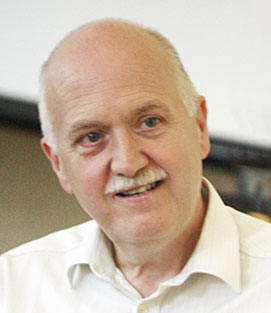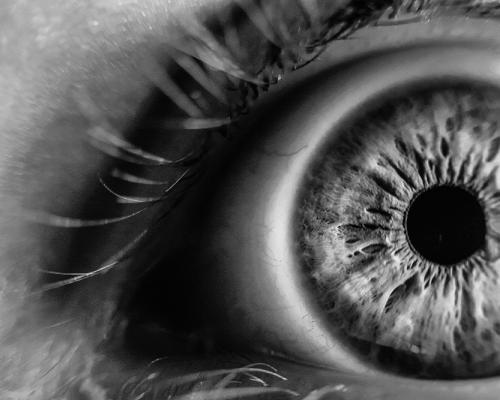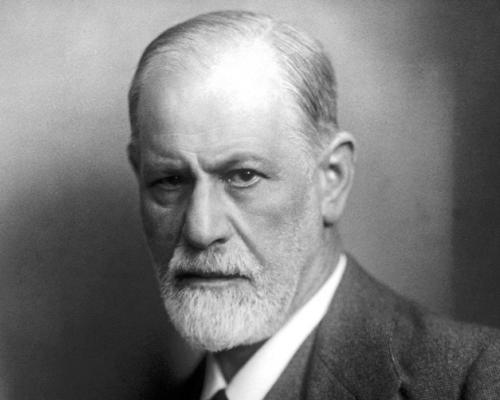Why we dream to forget (I don't dream)
Joe Griffin explains why dreaming and forgetting our dreams, fulfils a vital human need.
THE human givens approach is a set of organising ideas that provides a holistic, scientific framework for understanding the way that individuals and society work. That framework has one central, highly empowering idea at its core — that human beings, like all organic beings, come into this world with a set of needs. If those needs are met appropriately, it is not possible to be mentally ill. I do not believe a more powerful statement than that could ever be made about the human condition. If human beings' needs are met, they won't get depressed; they cannot have psychosis; they cannot have manic depression; they cannot be in the grip of addictions. It is just not possible.
To get our needs met, nature has gifted us our very own internal guidance programme — this, together with our needs, makes up what we call the human givens. We come into the world with an instinctive knowledge of what we need and with a set of inner resources that can help us get our needs met, provided we use them properly and are living in a healthy environment.
In terms of the history of where our knowledge about human needs comes from, there has been a distinguished cast of contributors, going right back to ancient times. More recently William James, Sigmund Freud and Alfred Adler explored human needs, and there was an outstanding contribution by Abraham Maslow, the pioneer of humanistic psychology, who first talked about a hierarchy of needs. [1] It was Abraham Maslow who introduced the idea that, until basic needs are met, people can't engage with questions of meaning and spirituality — what he calls selfactualisation.
Another contributor was William Glasser, who put forward the idea that fulfilment of people's needs for control, power, achievement and intimacy depends on their ability to behave responsibly and conscientiously; he argued vehemently that mental illness springs from these needs not being met. [2] So the human givens approach belongs to no specific people, certainly not exclusively to Ivan Tyrrell and me, although we may have named it; it belongs to the human species. We are just talking more precisely about what nature has gifted us, and there have been many great contributors down the millennia and the centuries, who have contributed to our understanding of the human givens.
What we have started to do, in what has come to be called the human givens approach, is look at human needs in the light of increasing knowledge and recent discoveries that flesh them out, so that we can define them and concretise them and make them more real. We now know that having meaning and purpose, a sense of volition and control, being needed by others, having intimate connections and wider social connections, status, appropriate giving and receiving of attention etc, are crucial for health and well-being. (Attention needs weren't understood in Western psychology at all, before the contribution of Idries Shah.) So, on one side of the equation, we now have a much fuller understanding of human needs.
And, on the other side, we have our human resources — the innate guidance system. We are learning much more about how that works and the more we understand, the more effective we will be, for sure.
The REM state is at the core of being human
At the heart of the internal guidance system lies the REM (rapid eye movement) state. The REM state is, of course, predominantly the state in which dreaming occurs. That is how it got discovered. Sleep researchers studying in the laboratory what happens in the brain during sleep discovered that the brain becomes activated periodically throughout the night, to the accompaniment of rapid eye movements (REM). When they woke people up from sleep at those times to find out what was going on, they learned that, 80 per cent of the time, people reported that they were dreaming. But they dreamed just seven per cent of the time during non-REM sleep. [3] So there is an irrefutable link between dreaming and the REM state.
If you pick up almost any major textbook on the neurology of the brain and look for the REM state in the index, in all probability, you won't find it. Nonetheless, within the human givens approach, we say that the REM state is at the core of being human. This is no idle claim. In the human givens theory, right from the beginning, we have advanced the evidence that instinctive templates are programmed in during the REM state in the fetus [4] and are pattern matched in the environment, after a baby comes into the world. Directly linked to this is the equally significant role of REM-state dreaming — explained in our expectation fulfilment theory of dreaming. I shall be showing how the latest scientific findings now validate these ideas. But first it is important to take a look at the main theories of dreaming, because a challenge to them needs to be able to stand up to the most rigorous scientific examination.
There are four major players in the field. The theory that has dominated for the last 30 years is one put forward by Professor Allan Hobson of Harvard University and his colleague Robert McCarley. They called it the activation synthesis theory. In the light of more recent evidence, this theory has fallen apart. As a result, there has been an effort to revive Freud's theory and I shall be giving the evidence for why that doesn't stand up either. The third theory in the field is one developed by Francis Crick, who died recently. He was better known as the co-discoverer of DNA. And finally, there is the theory that dreaming facilitates memory consolidation. I am going to look at all these theories to see where they stand now.
Random barrage
I will start with Hobson and McCarley's activation synthesis theory. [5] Laboratory studies of brain waves show that, just before we go into REM sleep and during it, powerful electrical signals pass through the brain like a wave. On electroencephalogram recordings (EEGs), they appear as sudden spikes. The signals arise from the pons (P) in the brainstem, from the neurons that move the eyes, and then travel up via a part of the midbrain called the geniculate body (G) to the occipital (O) cortex in the higher brain — so are known as PGO spikes. (They also constitute what is termed our orientation response, which, when we are awake, is what directs our attention to any sudden change in the environment, such as a sound or movement.)
Hobson and McCarley's theory was that these PGO spikes were sending a random barrage of stimulation through the brain every so often, activating the whole cortex as a result; the higher brain had to try and make some sense of this random barrage, and dreams were the result. Dreams, therefore, were an epiphenomenon: they had no intrinsic meaning. They were just the brain's efforts to synthesise some sense from random signals.
Evidence has accumulated over the last 30 years to disprove this theory. The first piece of evidence that disproved it emerged once PET scanning of the brain was developed. According to Hobson and McCarley's original theory, a barrage of random stimulation coming up periodically from the brainstem was synthesised by the prefrontal cortex into dreams. But scans of the brain in the REM state showed that the cortex was very selectively activated. The emotional brain (the limbic system) and the visual brain were highly activated but the prefrontal cortex was excluded from this stimulation (the very part supposed to be doing the synthesising). [6] Indeed, Hobson himself, over the last few years, has been so drastically redrafting the theory that it is just a pale shadow of its original presentation. [7] Even he now agrees with the evidence that, instead of global forebrain activation being responsible for dream synthesis, it is the emotional brain that is responsible for dream plot formation. [6]
This evidence on its own disproves the theory. However, there is more. Research accumulated over the last 40 years, and universally accepted by dream researchers, shows that dreams are coherent and that they relate to previous waking experiences. There also tends to be continuity in the type of dream content over time and this could not be so if there were a random stimulus.

Hobson and McCarley also theorised that REM sleep serves to 'rest' the cells in the brainstem which produce serotonin and noradrenalin, because in REM sleep these particular neurotransmitters are not used by the brain. Their idea was that these neuronal pathways were being rested so that we would wake up the next day, refreshed by REM sleep. Consequently, then, the more REM sleep people had, the more refreshed they should be. But researchers looking at the sleep patterns of depressed patients found that they had massive amounts of REM sleep in proportion to slow-wave sleep and yet, far from waking up refreshed, they were waking up exhausted! [8] How did Hobson account for this? He just said, "It is a paradox."
Yet another problem with this theory, which Hobson admits in his latest book, is that it can't explain why certain dreams have positive emotions and some have negative emotions. [9] But the final nail in the activation synthesis theory's coffin is the finding that deep brainstem lesions do not generally stop dreaming, whereas certain lesions in the cortex do, despite the existence of brainstem-initiated REM sleep. [10]
Who wants nightmares?
I should now like to move on to Freud's theory. There has recently been strong evidence to show that REM involves the expectation dopamine pathway. Professor Mark Solms, who holds the chair in neuropsychology at the University of Cape Town in South Africa, has been pre-eminent in synthesising this research, showing that when people go into the REM state, the motivation circuit in the brain — the expectation pathway — is activated. [10] As Freud talked about motivation and emotion, and, as Hobson was clearly wrong, perhaps, says Solms, Freud was right after all. And, in a very broad sense, this activation is support for Freud. But what it leaves out of the picture is that, when you activate the expectation pathway, you are activating consciousness. You are not activating some subconscious conflict. So there is no real evidence there in support of Freud.
Secondly, Freud's theory has real difficulties explaining why people so often have anxiety dreams.[11] Dreams also involve being angry a lot of the time. Freud said dreams were for fulfilling wishes. But who would want nightmares? Who would want to get beaten up or sexually assaulted in their dreams? So Freud's theory just didn't explain in any coherent fashion the fact that dreams involve far more than wishes and that only a minority of them can be characterised as wishes. And his claim that all dreams are sexually motivated is no longer given any credence.
Freud claimed that we dream to protect sleep, to prevent us being awakened by threatening, sub-conscious wishes.[11] However, the REM state, in which most dreams occur, is a regularly occurring biological programme in humans and other mammals, and not something which arises to protect sleep.[3]
To recap, expectation pathways activate conscious, not subconscious, experience. There is no evidence at all that dreams are sexually motivated and Freud can't plausibly explain why we would wish for anxiety dreams. The REM state occurs in all mammals, so it is not just a human activity, protecting sleep, as Freud suggested. A cat is unlikely to be dreaming about its Oedipus complex. So the attempt to revive Freud's theory seems to be based more on wishful thinking than on realistic considerations of its defects.
Strange parasitical connections
Francis Crick and Graeme Mitchison's theory suggested that we dream to forget.[12],[13] Their idea came from studying work done on computer programs that simulated neural intelligence. An overload of incoming information could trigger "parasitical connections" between unrelated bits of information that interfered with memory, and an unlearning system had to be developed to knock these out of the computer systems. Crick and Mitchison postulated that a complex associational network, such as the cortex, might become overloaded in the same way, and that the PGO spikes were an unlearning mechanism, in the form of random 'bangs' coming up from the brainstem every so often, to knock out these fairly weak parasitical neural links. As, at that time, most dreams were thought to be bizarre in content, this was taken as evidence for the existence of these parasitical connections. Crick and Mitchison theorised that, if we didn't have dreaming, we would go on making more and more bizarre connections, which would imply that, if we block REM sleep, our memories should become more addled. If this theory is correct, then depressed people on antidepressants that block REM sleep (monoamine oxidase inhibitors — MAOIs) should suffer memory impairment they don't. If anything, depressed people on MAOIs report memory improvement rather than increased confusion in memory recall.

Yet another problem with the theory is that, over the last decade or so, there have been significant technical advances in the recording of what actually happens during dreaming. The overwhelming majority of dreams are, in fact, quite routine, everyday experiences.[14] It is the tiny percentage of dreams that we recall that seem bizarre: dreams recorded in the sleep laboratory, when sleepers are woken as soon as they go into REM sleep, are mostly not bizarre at all. As a result of this discovery, Crick revised his theory to suggest that it might still, at least, explain those few dreams that do have a bizarre component to them. In other words, his theory has been so drastically modified that very little of it remains at all.
Finally, since Crick and Mitchison formulated this theory, not a shred of evidence has arisen to show that the human brain makes parasitical connections. That is something known only to occur with computer networks.
REM's role in memory
The final theory on the table is the memory consolidation theory. Blocking REM sleep impairs the ability to perform procedural tasks tasks that involve the learning of a skill through a sequence of steps that involve making predictions. For example, rats trying to find their way around a complex maze to get a reward remember much better how to do the task if they have had REM sleep. Without REM sleep, the knowledge becomes damaged. So REM sleep would seem to facilitate this type of learning.[15]
It has also been shown that, in complex learning, memory is improved if we have both slow-wave sleep and REM sleep, otherwise the knowledge doesn't seem to survive quite so well.[16] So, clearly, there is some connection between memory and REM sleep.
But is there evidence that the REM state and dreaming exist fundamentally to carry out memory consolidation? The first piece of evidence that goes against this possibility is that taking MAOIs, the antidepressants that suppress REM sleep, does not lead to memory impairment.[17]
So, although there is some evidence that certain types of learning do seem to be improved by REM sleep, most dreaming cannot be about retaining new learning.
The second fact that goes strongly against the memory consolidation hypothesis is that almost nobody remembers their dreams! It is very rare to remember dreams, unless you've trained your- self to do so. We dream for about two hours a night. Dream researcher Allan Hobson, an expert trained to recall his dreams, has himself pointed out the fact that, when he looked at the number of dreams he had recorded against the number he had forgotten, it was something like 0.0002 per cent.[7] So it seems hard to see how we could be dreaming to make our memories permanent if we forget the material we are processing as soon as we open our eyes. (Yet, as certain types of memory do seem to be facilitated by REM sleep, any state-of-the-art theory of dreaming must be able to account for it.)
"We need a new theory"
Writing in Behavioural and Brain Sciences, in a special issue devoted to the most widely promoted dream theories, Professor Domhoff of the University of California, recognised as one of the leading researchers in this field, commented on the evidence presented, concluding, "If the methodologically most sound descriptive empirical findings [ie the findings that are most solidly established to explain dreaming] were to be used as a starting point for future dream theorising, the picture would look like this:
- Dreaming is a cognitive achievement that develops throughout childhood
- There is a forebrain network for dream generation that is most often triggered by brainstem activation [the PGO spikes]
- Much of dream content is coherent, consistent over time and continuous with past or present emotional concerns."[14]
So any theory of dreaming would have to account for those three most solidly established findings. I personally would add to that the need to explain memory consolidation as well, if a theory were to explain the full picture.
Here is Domhoff's final conclusion: "None of the papers reviewed in this commentary puts forward a theory that encompasses all three of these well-grounded conclusions. This suggests the need for a new neurocognitive theory of dreaming."[14] In other words, according to Professor Domhoff, theories that have dominated the field over the last 30 years do not explain why we dream, and there is need for a completely new one.
The expectation fulfilment theory
Let us take a look at the expectation fulfilment theory to see if it can explain the evidence that the other theories cannot explain. This theory of dreaming is quite different from the others in that it is firmly based in biology and yet explains the richness of the subjective experience of dreams. It states that: all arousals of the autonomic nervous system – the generation of an emotion, however slight – form half of a process. The second half is that the brain has to fulfil that expectation (an emotion is the same as an expectation) through an action of some kind. If that doesn't happen in reality during the daytime, it happens metaphorically in a dream at night, thus completing the arousal – de-arousal process.
First, has any evidence against the expectation fulfilment theory been put forward? Since it was first published 12 years ago, it has been looked at by professors at various universities. Professor Hans Eysenck of the Institute of Psychiatry saw it at the very beginning and advised me to publish it in book form, to do it justice. Lots of other people working in dream research have looked at it as well, and no flaws have been identified in the theory, to date.
There is, however, a considerable amount of evidence in support of it. First is the experiment I carried out, the findings of which were published in The Therapist,[18] predecessor of the Human Givens journal, and then in book form, in The Origin of Dreams,[19] and further updated in Dreaming Reality (now called "Why we dream: the definitive answer").[20] It was the first time in scientific dream research, I believe, that someone set out to predict their own dreams, with the hypothesis that dreams relate to emotional experiences of the day before a hypothesis that has since been well validated. Dreams do involve waking emotional material.
I set up an experiment using my own dreams, waking myself up every two hours, and, for a period of a week, predicted the emotional concerns that would feature in the dreams. I found that the dreams always reflected my waking emotional concerns of the previous day, but not necessarily the most important of these. By analysing the data, I was able to show that dreams dealt not with emotional concerns per se but with those emotional concerns that had not been dealt with satisfactorily. No matter how important the emotional concern, if it got dealt with while awake, it was over and did not re-appear in a dream. The only emotional concerns that became dreams were those that I was still aroused about, for which I still had expectations that I couldn't complete.
Dreams are the fulfilment of those emotional expectations that have not been met prior to waking. They always act out the fulfilment in metaphor — ie a matching sensory pattern to the original expectation. For example, if a man feels like hitting his boss but restrains the impulse, that night he might dream of attacking another authority figure. The hypothesis was derived from a scientific experiment, which anyone can replicate, should they wish.
A second piece of evidence arises from an analysis of Freud and Jung's specimen dreams, which they had offered as the best convincing evidence for their theories.[20] The analysis revealed that the dreams were perfect metaphorical manifestations of what was worrying them the day before, according to detailed written data they had themselves provided. This was structurally extremely tight-fitting data. Freud's dream of Irma's injection and the expectations he had the previous day, the sequencing of the dream, the characters involved and what they actually did in the dream provided an exact mirror image of the biggest event he had on his mind before he went to bed that night. There is no ambiguity there. It was likewise for Jung's dream.
Furthermore, hundreds of other dreams for which we had the emotional data from waking have been analysed, and have validated the theory. Thousands of people have read the theory and many of them have contacted us with confirmation of their own.
In addition, the expectation fulfilment theory explains the developmental evidence that Domhoff wanted explained — that dreams are coherent (because they are metaphorical representations of uncompleted emotional expectations) and become more complex over time from childhood (as our introspective processes become more complex and develop). Indeed, it even goes further and explains how REM function in the fetus relates to REM function in adulthood in dreams — the pattern-matching templates are programmed in during REM sleep, as a fetus and in early life, and the same pattern-matching process is used in dreams to deactivate emotional arousal.
It is also consistent with Domhoff's requirement for "a forebrain network for dream generation"[14] (ie the uncompleted emotional expectations). And that is "most frequently triggered by brainstem activation" — the PGO startle response serves to alert the cortex to something happening and, as the brain is getting no information from the outside world at this point, it has to release from memory its current unfulfilled expectations, as its best guess as to what the 'something happening' might be.
The theory explains the consistency of dreams and the relationship to waking emotional concerns, so it meets Domhoff's criteria in that respect too. It explains the depression evidence, which none of the other theories does. (Depressed people have proportionally too much REM sleep because they continually worry and introspect, causing so much arousal needing to be discharged in dreams that they end up exhausted in the morning, instead of refreshed after sleep.[8]) It provides the first scientific explanation for hypnosis (showing that the REM state and the state known as hypnosis are one and the same). It is the only REM theory in the field to go beyond itself in this wayand, indeed, a good theory ought to be able to do that, to enlarge our understanding by explaining other things not currently explained.
The functions of REM sleep
So what, then, are the functions of REM sleep? There are three. First, it has the function of switching off emotional expectation and thereby reducing the stress of managing increasing numbers of expectations that are no longer applicable to the current environment.
Second, it creates spare storage capacity in the cortex. If we look back to a primitive mammal such as the echidna (the spiny anteater), we see that, from one perspective, it has the most amazing brain on earth. It has the biggest cortex of any creature alive, for the amount of its body-weight. It doesn't have REM sleep. That is evidence to suggest that, if a creature doesn't have REM sleep, maybe it needs to have a massive cortex instead because, if unfulfilled expectations are not cleared out each night, a brain is going to need the ability to grow an ever bigger catalogue of expectations that it is still seeking to fulfil. So, by clearing in dreams each night expectations that haven't been acted out, there can be more spare capacity in the cortex.
Third, REM sleep has the function of preserving the integrity of our emotional templates. Up till now, we have never really said much about how this happens. We have said that somehow REM sleep removes impediments by acting out the unfulfilled expectations, but we haven't been specific about what is actually going on in the brain. And that is what I would like to do nowto carry the expectation fulfilment theory forward to show that it is consistent with the very latest neurological findings and ideas about how the brain works.
First, let us look at how intelligence systems work. Evolutionary psychology had postulated that brains, and in particular the human brain, must contain particular modules in the cortex that give us various types of intelligence. Hundreds, perhaps even thousands of these modules are in there, written from the genes in the cortex, telling us how to do all the things we might have to do — for instance, how to choose a mate, how to calculate whether there is reciprocity in a partnership, when to have sex, what tastes good, how to recognise the faces of the people we know, when to get sexually jealous and how to read other people's minds. Hundreds of little intelligence systems within the brain were postulated to explain how human beings can be so intelligent.[21]
What we've learned from bees
That view has been strongly challenged from two separate sources. The new theory is that the brain has what is termed an adaptive intelligence.[22] It starts off with some basic instincts but these instincts are modifiable, as a result of experience, and the brain can continually refine its learnings.
Of course, this is similar to the terms in which we have been talking for the last eight or so years in human givens theory — patterns being programmed into the brain in the REM state, during gestation and very early childhood, which humans seek to complete in the environment after birth, allowing our brains to be more flexible. All learnings, we have said, are about pattern refinement — and that, in effect, is what is contained in the latest scientific theory, which has been shown to be capable of explaining complex human behaviour.
The first evidence for this came from research findings that the honeybee has a neural transmitter called octopamine, which is similar to dopamine, our own motivation neurochemical. One single cell, using this neurochemical, motivates the bee to go out every morning to search for nectar (instinctive behaviour) and then that cell keeps a record of where the nectar is found.

The next time the bee goes out, it predicts, on the basis of that record, where it will get nectar today. So if the bee got nectar from a blue flower yesterday, it will pattern match and go to a blue flower today, predicting and expecting that it will get nectar there again. If it doesn't get nectar from the blue flower today, it immediately revises its memory store. So the memory store will now show that blue is not such a good predictor of nectar after all. Clearly, then, the bee has an instinct plus a capability for learning; it takes an instinctive pattern, builds on current information and modifies it, literally, on the wing.[23]
That is also what was postulated by computer scientists trying to model how the brain works. Their computer program succeeded in modelling complex bee foraging behaviour, and many other kinds of more complex behaviours, using this simple idea that you start with an instinctive core that can be modified through feedback from previous efforts.[24] It is a far more efficient system for acquiring knowledge than the one suggested in the module theory. If we had masses of modules in the brain, all occupying their own areas, the brain should be pretty well fixed, and that is exactly what the evolutionary psychologists thought was so.
Their idea was that those modules had evolved over the two million years that we were Stone Age hunter-gatherers and that, as all of our knowledge would go back to those times, we are ill-fitted for the world we live in today — a very fatalistic view of human nature. But the new information allows us to be more optimistic about human capacity. Even bees can learn. Behaviour has been shown to be so very much more malleable than anyone had ever suspected.
The sight cells that read Braille
The second source of evidence is neurological, and became available to us once brain scans were developed that could show exactly what was happening inside the skull cap when people learn new things. For example, it is now clear that, when people are born blind, the brain cells that would have been used to generate sight learn to read Braille instead.[25] So neurons are incredibly adaptive. They can take on new tasks.
It is now well known, for example, that the hippocampal area in taxi drivers' brains grows new cells and expands, when they do 'the knowledge' — the huge number of street maps they must plot out, learn and keep in their heads. It has also been shown that we can teach even autistic children some of the basics for empathy, despite their initial marked lack of emotional understanding.[26]
Dreams are for forgetting
So this is where the cutting edge of brain research is. However, there is another important aspect of dreaming that I have alluded to but that I want to look at properly now. None of the dream theories I have discussed can satisfactorily explain why we forget almost all of our dreams. The question that has to be answered is, what is the function of forgetting our dreams? We shall see that the expectation theory of dreaming provides a satisfying explanation for this widely observed phenomenon.

Brains evolved to help animals make more accurate predictions about what behaviours would help them survive. But the type of expectations we have as humans, or that other animals have, for that matter, are infinitely more complex than those of a bee. When mammals evolved, they developed warm-bloodedness, which meant that they were no longer dependent on the sun's heat for mobility. But maintaining a constant warm body temperature required a greatly increased energy intake (estimated at up to a 500 per cent increase in calories needed). So, to meet this need, mammals had to become much better at locating food supplies while also avoiding becoming food themselves for other warm-blooded predatory mammals — all of which required a much more sophisticated prediction system, to reduce the risks.
The cortex provided the answer. The evolution of the cortex, with its much increased processing capacity, enabled mammals not just to act purely on instinct — see a food source and go for it — but to weigh up the risks and benefits of an action — do I have time to make the kill and hide it or will I get eaten by another animal while I'm doing it? In more technical terms, it enabled the ancient dopamine prediction circuits of the limbic system to be subjected to a higher-order risk analysis, based on the additional computing power provided by the cortex.
However, that left another problem to be solved. The limbic system communicates with the cortex via behavioural impulses (emotions). If these are not acted upon (for instance, because the strategy is deemed too risky or because the cortex has set other priorities — such as deciding, in certain circumstances, that it is more important to protect young than to chase a possible food source) they don't go away. In the case of humans, this state of unfulfilled expectation can also occur when we think about something in the future or the past that causes emotional arousal in the present but which can't, by its very nature, be acted upon. These uncompleted emotional impulses — expectations — stay switched on, taking up processing capacity in the expectation system.
So far, two strategies have evolved for dealing with this. The first, as I mentioned in connection with the spiny anteater, is the development of a much bigger cortex to store all these expectations whilst retaining sufficient spare computing power for making new, ongoing risk assessments. This may also be the strategy evolved by dolphins, which have an exceptionally large cortex. The muscle paralysis that accompanies REM sleep places dolphins at risk of drowning, so they can have hardly any REM sleep.
The second and much more efficient method is dreaming. In dreaming, we act out the unrealised expectations from waking by pattern matching them to analogous sensory patterns — images and events stored in memory — as it is through pattern matching that the REM system works. I am often asked why the pattern match has to be analogical or metaphorical. Apart from the evidence I have published explaining this point,[20] there is a sound physiological reason for why it must be so. An expectation is an imagined scenario, using images from memory.
In dreaming, we are asking memory to provide a scenario that matches a scenario that is already a part of memory — the event that aroused the expectation. So the matching scenario has to be the best fit that memory can provide. Think of it this way — if I hold up my left hand and ask my brain for a best-fit pattern match, it can't use my left hand because that is the one I want a match for — so it must use my right hand, as the best-fit pattern match for my left. (This does not happen in waking because we pattern match our expectations to whatever stimulates them in the environment, not to a memory. If we want an ice cream, the expectation is fulfilled when we are actually eating it.)
The dream, then, by fulfilling the expectation, completes the circuit and switches off the arousal. But that is not the end of the matter, for we have now converted an unrealised expectation into a factual memory of completing it. Ordinarily, the hippocampus, the conscious memory store, holds our memories of recent events and quickly deconstructs those memories and sends them to various parts of the cortex — the parts concerned with vision, hearing, touch, etc — for storage. It does that to facilitate efficient pattern matching. But, if the dream is allowed to be stored as a real memory, it will corrupt the memory store and greatly diminish our ability reliably to predict the outcome of similar experiences in the future. This is avoided by preventing the hippocampus from sending the dream information to the cortex for long-term storage.[27] As explained earlier, PET scans and other types of research have shown that, in dreaming, the prefrontal cortex is closed down.
So it is no accident that the prefrontal cortex is switched off during dreaming. It is no accident that the hippocampus doesn't de-construct information and send it all around the brain because what the hippocampus is doing in dreaming is getting rid of expectations that didn't pan out while we were awake. It is getting them out of the way, making them inaccessible, in effect, so as to allow us to build up a proper, intelligence prediction and expectation system, an accurate storage of knowledge. (This also explains the evidence for memory consolidation — if you take away all the false expectations, the memories that are consolidated are more accurate.)
The expectation fulfilment theory can therefore explain why dreams are about emotionally arousing events, particularly about emotionally arousing expectations. It explains why dreams are consistent over time. It explains the developmental aspects of dreaming. It can explain the other tests put down by Domhoff. But, more than that, it explains the cutting-edge evidence that the brain is ever malleable, by explaining how it can be so malleable.
The purpose of the brain is to predict, so that we can get our needs met. We need to have a system that can continually adapt itself, and the expectation fulfilment theory shows how the brain does that by cancelling out the expectations that didn't work. It enables us to have a bang-up-to-date register of what really does get needs met in our lives, so that we can more accurately predict what we need to do in the future. (But we can only work with the experiences we have had. If, as a child, a young woman experienced both abuse and love from her father, she may continually seek a relationship with abusive men, until eventually she can learn that love exists separately from abuse.)
What about remembered dreams?
You might then wonder if recalling our dreams, as sometimes happens, is undoing the dreamwork. The answer is no, because the arousal is switched off once the expectation is acted out. When we are awake, the cortex is switched on, enabling us to compare dream content to what is really happening around us and, thus, to distinguish between dream and reality.

Occasionally the cortex is alerted by some incongruity in the dream experience, such as flying, and we become aware that we are dreaming. (this is known as lucid dreaming) But this risks undoing the dream work of deactivating the experiences — because we now know we are experiencing a fantasy. (In more primitive mammals, if an altering of the cortex were to happen, it is less likely their brains could make the distinction between dream and reality; the fantasy would be treated as real and would therefore corrupt the memory stores.)
Knowledge contained in patterns
So, in the human givens theory, right from the beginning, we have argued that the evidence shows that templates programmed in during the REM state in the fetus aren't fixed. There is only ever a part of them that is specified; the rest comes from learning. The new discoveries about the brain showing, for example, that we can use for reading Braille the neurons in the cortex that were previously used for seeing, shows that the cortex is highly malleable, and that we can change the ways we complete patterns. What the human givens theory has postulated from the beginning, cutting-edge research is strongly supporting now — our brains are built for life-long learning.
Given this fact, and that dreaming is predominantly about bringing down emotional arousal and removing failed expectations and forgetting them, maybe it would make best sense to change the name of the expectation fulfilment theory. It is an accurate name — dreams do fulfil expectations — but it doesn't make plain that we need to do this specifically to forget them.
I am proposing "the elimination of emotional expectations theory". As this has three 'E's, it can be shortened to "the triple-E theory". Elimination of emotional expectation lowers emotional arousal. It frees up spare capacity in the cortex. And dreaming amnesia eliminates failed expectations and thus updates the expectation memory store — our internal guidance system. That is the function of dreaming in the REM state.
 Take a look at the triple-E symbol. To me, it summarises all that I know about dreaming, and that I firmly believe to be accurate. The figure 3 stands for the three Es —elimination of emotional expectation. The 3 is a perfect reflection of the letter E, just as dreams are metaphorical pattern matches that eliminate failed expectations. If you focus on the space in between the 3 and the E, you can see it as a type of figurine, an oddly shaped vase, and then you can bring your mind back and see the triple-E again. That emphasises the fact that dreams are hallucinations.
Take a look at the triple-E symbol. To me, it summarises all that I know about dreaming, and that I firmly believe to be accurate. The figure 3 stands for the three Es —elimination of emotional expectation. The 3 is a perfect reflection of the letter E, just as dreams are metaphorical pattern matches that eliminate failed expectations. If you focus on the space in between the 3 and the E, you can see it as a type of figurine, an oddly shaped vase, and then you can bring your mind back and see the triple-E again. That emphasises the fact that dreams are hallucinations.
Just that little symbol shows that a pattern can contain an incredible amount of knowledge. And that is what we have always said: knowledge is contained in patterns.
 JOE GRIFFIN is a research psychologist and psychotherapist. He is, with Ivan Tyrrell, co-founder of the human givens approach.
JOE GRIFFIN is a research psychologist and psychotherapist. He is, with Ivan Tyrrell, co-founder of the human givens approach.
Over the last two decades, as co-developer of the human givens approach to psychology and behaviour, thousands of health professionals have enjoyed his practical workshops and seminars on brief therapy for treating anxiety related disorders, depression, trauma and addiction. As the Educational Director of the College he works at the leading edge of skills-based therapy research and practice. He is widely recognised as one of the most informed and entertaining speakers on human behaviour.
This article first appeared in"Human Givens Journal" Volume 12 - No. 1: 2005
 Spread the word – each issue of the Journal is jam-packed with thought-provoking articles, interviews, case histories, news, research findings, book reviews and more. The journal takes no advertising at all, in order to maintain its editorial independence.
Spread the word – each issue of the Journal is jam-packed with thought-provoking articles, interviews, case histories, news, research findings, book reviews and more. The journal takes no advertising at all, in order to maintain its editorial independence.
To survive, however, it needs new readers and subscribers – if you find the articles, case histories and interviews on this website helpful, and would like to support the human givens approach – please take out a subscription or buy a back issue today.
References
- Maslow, A H (1971). The farther reaches of human nature. Viking, New York.
- Glasser, W (1965). Reality theory. Harper & Row, New York.
- Aserinsky, E and Kleitman, N (1953). Regularly occurring periods of eye mobility and concomitant phenomena during sleep. Science, 18, 273—274.
- Jouvet, M (1978). Does a genetic programming of the brain occur during paradoxical sleep? In P A Buser and A Rougel-Bouser (eds) Cerebral Correlates of Conscious Experience.
- Elsevier Hobson, J A and McCarley, R W (1977). The brain as a dream-state generator: an activation-synthesis hypothesis of the dream process. American Journal of Psychiatry, 134, 1335—1368.
- Macquet, P, Peters, J et al (1996). Functional neuroanatomy of human rapid eye movement sleep and dreaming. Nature, 383 (6596), 163—166.
- Hobson, J A, Pace-Schott, F and Stickgold, R (2000). Dreaming and the brain: toward a cognitive neuroscience of conscious states. Behaviour and Brain Sciences, 23, 6, 793—843.
- Berger, M, Lund, R et al (1983). REM latency in neurotic and endogenous depression and the cholinergic REM induction test. Psychiatry Research, 10, 113—123.
- Hobson, J A (2005). 13 Dreams Freud Never Had. Pi Press, New York.
- Solms, M ( 2000). Dreaming and REM sleep are controlled by different brain mechanisms. Behaviour and Brain Sciences, 26, 6, 843 — 850.
- Freud, S (1953). The Interpretation of Dreams. In the standard edition of The complete psychological works of Sigmund Freud. J Strachey (ed). Hogarth Press.
- Crick, F and Mitchison, G (1983). The function of dream sleep. Nature, 304, 111—114.
- Crick, F and Mitchison, G (1995). REM sleep and neural nets. Behavioural Brain Research, 69, 147—155.
- Domhoff, G W (2000). Needed: a new theory. Behavioural and Brain Sciences, 23, 6, 928—930.
- Wilson, M A and McNoughton, B L (1994). Reactivation of hippocampal ensemble memories during sleep. Science, 265, 676— 679.
- Winson, J (2002). The meaning of dreams. Scientific American, 12, 1, 62—71.
- Jouvet, M (1999). The Paradox of Sleep. MIT Press, London.
- Griffin, J (1993). The meaning of dreams: a scientific solution to an ancient mystery. The Therapist, 1, 3, 33—38.
- Griffin, J (1997). The Origin of Dreams. The Therapist Ltd.
- Griffin, J and Tyrrell, I (2004). Dreaming Reality: how dreaming keeps us sane or can drive us mad. HG Publishing, East Sussex.
- Tooby, J and Cosmides, L. Evolutionary psychology: a primer. www.psych.uscb.edu/research/c2P/primer.html
- Quartz, S and Sejnowski, T (2002). Liars, Lovers and Heroes: what the new brain science reveals about how we become who we are. Harper Collins, New York.
- Hammer, M and Menzel, R (1995). Learning and memory in the honeybee. Journal of Neuroscience, 15, 1617—1630.
- Montague, P, Dayan, P et al (1995). Bee foraging in uncertain environments using predictive Hebbian learning. Nature, 377, 725—728.
- Robertson, I (1999). Mind Sculpture: unleashing your brain's potential. Bantam Books.
- Austin, A (2003). Good choices: autism and the human givens. Human Givens, 10, 2, 19—23.
- Busáki, G (1995). The hippocampo—neurocortical dialogue. Cerebral Cortex, 6, 81—92.
Latest Tweets:
Tweets by humangivensLatest News:
HG practitioner participates in global congress
HG practitioner Felicity Jaffrey, who lives and works in Egypt, received the extraordinary honour of being invited to speak at Egypt’s hugely prestigious Global Congress on Population, Health and Human Development (PHDC24) in Cairo in October.
SCoPEd - latest update
The six SCoPEd partners have published their latest update on the important work currently underway with regards to the SCoPEd framework implementation, governance and impact assessment.
Date posted: 14/02/2024















